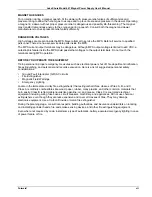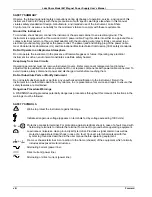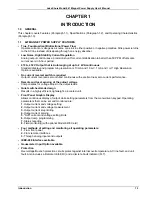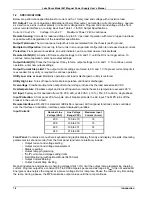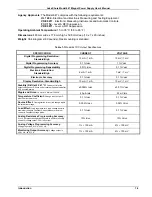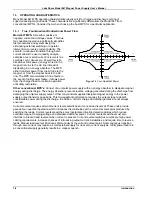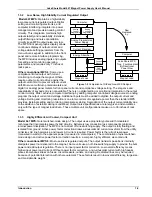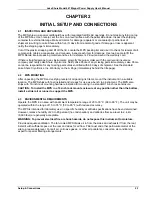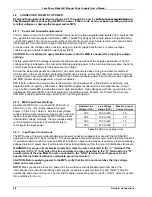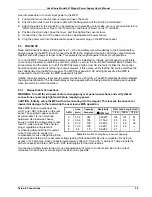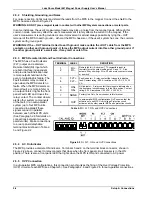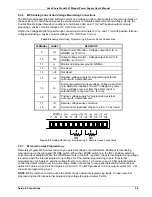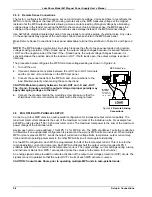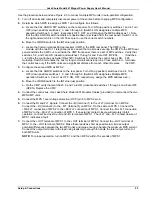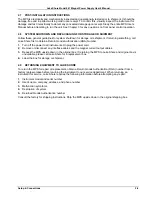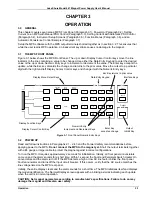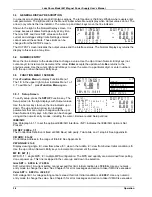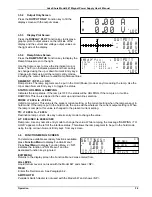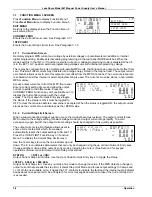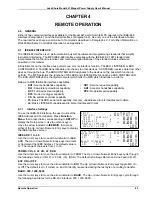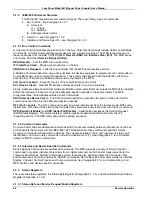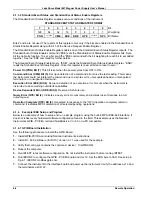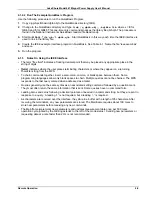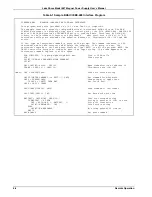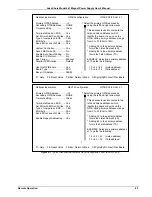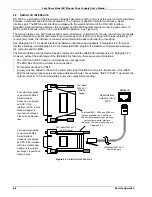
Lake Shore Model 647 Magnet Power Supply User’s Manual
Setup & Connections
2-7
Use the procedure below and see Figure 2-5 to connect multiple MPS units in auto-parallel configuration:
1.
Turn off all units and completely disconnect power at the source before changing MPS configuration.
2.
Determine which MPS to assign as MPS 1 and configure it as follows:
a.
Locate the CAL AND ID DIP switches on the rear panel. Turn ON (up position) switches 1 and 4. Turn
OFF (down position) switches 2, 3, and 5 through 8. (Switch 4 ON designates multiple MPS
operation. Switches 3, 2, and 1 respectively OFF, OFF, and ON assign the MPS address as 1.) Note
that the CAL AND ID switch numbers are upside down (as viewed from the rear panel). Switch 1 is on
the right and switch 8 is on the left. Take care to use the correct switch numbers.
b.
Move the I MODE switch to the INTernal (up) position.
c.
Locate the Communications Microprocessor (CMP) in the MPS rear panel. The CMP is the
module with the two RJ-11 telephone jacks. Loosen the two screws securing the CMP to the MPS rear
panel and slide the CMP out. Just inside the CMP front panel, there is a set of DIP switches. Verify that
switches 5, 6, and 7 are ON (closed) and switches 1 through 4 and 8 are OFF (OPEN).
(Switches
1–4 define the control bus as Serial (RS-232C). Switches 5–8 define the control bus as RS- 485
multidrop. Switch 8 terminates the bus for long communications loop runs. Close switch 8 to terminate
the control bus only if the MPS units are a significant distance from each other.) Replace
the CMP.
3.
Configure the second MPS as MPS 2:
a
. Locate the CAL AND ID switches on the rear panel. Turn ON (up position) switches 2 and 4. Turn
OFF (down position) switches 1, 3, and 5 through 8. (Switch 4 ON designates Multiple MPS
operation. Switches 3, 2 and 1 as OFF, ON, OFF, respectively, assign the MPS address as 2.)
b.
Move the I MODE switch to the INTernal (up) position.
c.
On the CMP, verify that switches 5, 6 and 7 are ON (closed) and switches 1 through 4 and 8 are OFF
(OPEN). Replace the CMP.
4.
Connect the control bus. Use Lake Shore Model 2001 Modular Cables (provided) to interconnect the two
MPS CMP units.
5.
Connect the MPS 1 over voltage protection (OVP) pin 8 to MPS 2 pin 8.
6.
Connect the RI and FLT signals. Connect the +RI (terminal 1) to the +FLT (terminal 3) on MPS 2.
Connect the –RI (terminal 2) to the –FLT (terminal 4) on MPS 2. Do the same on MPS 1. Connect the
+RI/+FLT connection of MPS 2 to the +RI/+FLT connection of MPS 1. Connect the –RI/–FLT connection
of MPS 2 to the –RI/–FLT connection of MPS 1. If an external contact closure will remotely inhibit
operation, connect it across the +RI and –RI terminals of MPS 1. The +FLT and –FLT contact closure of
MPS 1 indicates a fault.
7.
Connect the +OUT terminal of MPS 1 to the +OUT terminal of MPS 2. Connect the –OUT terminal of
MPS 1 to the –OUT terminal of MPS 2. Make these leads as short as possible to minimize output
potential differences between the two MPS units and large enough to handle the maximum MPS current.
Connect the output terminals to the load using leads large enough to handle the total output current of
both MPS units.
NOTE:
For proper operation, turn on MPS 1 and then MPS 2 within 15 seconds of MPS 1.

